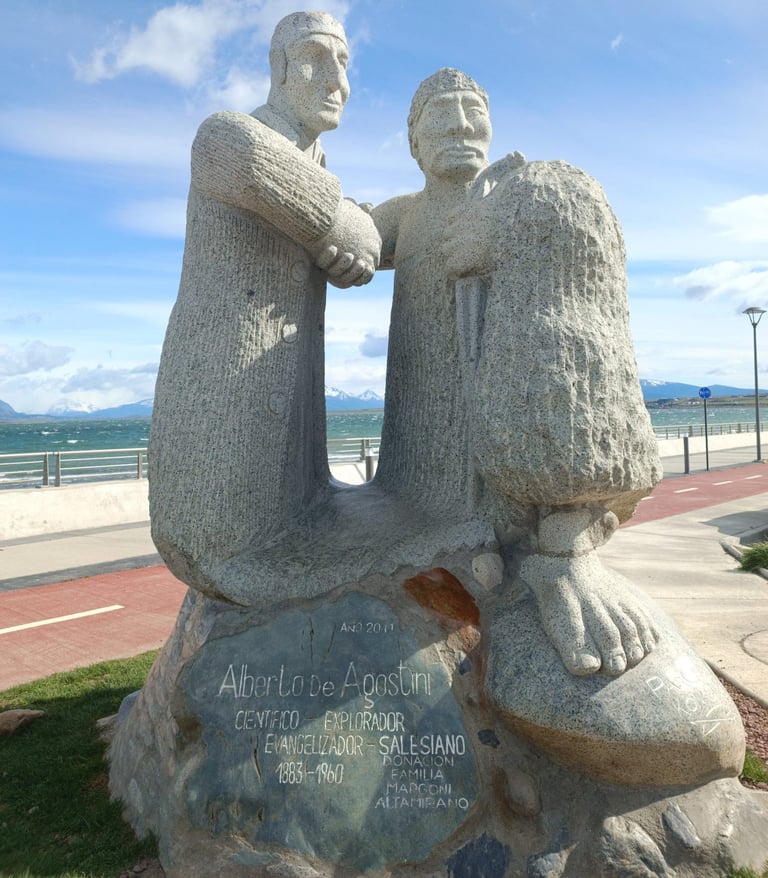History and Culture of Puerto Natales
Discover the roots and traditions of this charming city.
Estepa Patagónica
10/9/20242 min read


Puerto Natales, located in the heart of Chilean Patagonia, is much more than a gateway to the stunning national parks. This charming city boasts a rich history and vibrant culture that reflect the diversity and resilient spirit of its inhabitants. For travelers seeking an authentic experience, exploring the history and culture of Puerto Natales is as fascinating as its natural landscapes.
Origins and Founding
Founded in 1911, Puerto Natales emerged as a small settlement to support the region’s fishing and livestock activities. The city is named after the explorer Enrique Natales, who played a crucial role in the area’s development. Initially, the local economy focused on salmon fishing and sheep farming, activities that remain economic pillars to this day. The arrival of European immigrants, primarily from Italy and Croatia, enriched the cultural diversity of the city, leaving a visible mark on its architecture and traditions.
Architectural Heritage and Landmarks
Strolling through the streets of Puerto Natales is like taking a step back in time. The city’s architecture combines colonial elements with European influences, creating a unique and welcoming atmosphere. One of the most emblematic buildings is the Church of Puerto Natales, built in 1914, which stands out for its neo-Gothic style and colorful stained glass windows. Another point of interest is the Historical Municipal Museum, housed in a former government building, where artifacts narrate the evolution of the city from its inception to the present day.
Traditions and Festivals
The culture of Puerto Natales is celebrated through various festivals and events that reflect the multicultural heritage of its residents. The National Huaso Festival is one of the most prominent celebrations, featuring gaucho skill competitions, folk music, and traditional dances. Additionally, the city hosts artisan fairs where local craftsmen showcase and sell their creations, ranging from textiles and ceramics to jewelry and carved wood pieces.
Local Cuisine
Puerto Natales’ cuisine is a reflection of its history and natural surroundings. Traditional dishes combine fresh regional ingredients with European influences. Patagonian lamb, slow-cooked in the traditional style, is a must-try delicacy. Fish and seafood, especially salmon and congrio, are staples in many dishes. Additionally, empanadas and pastel de choclo are favorites among both locals and visitors alike.
Daily Life and Community
Life in Puerto Natales is characterized by a welcoming community and a strong sense of belonging. Residents value the preservation of their traditions and the care for the natural environment, promoting sustainable practices that harmonize with Patagonia’s beauty. The city’s plazas and parks serve as meeting points where community activities take place, from local markets to outdoor concerts.
Art and Culture
Art is an integral part of Puerto Natales’ identity. Art galleries and cultural centers display works by local artists who capture the essence of Patagonia in their creations. Music also plays a significant role, with regular festivals and performances ranging from folk music to contemporary genres.
Commitment to Sustainability
Puerto Natales is committed to sustainability and environmental conservation. Local initiatives promote responsible tourism, encouraging visitors to respect and preserve the natural surroundings. By staying in one of the cabins available on platforms like Airbnb, Vrbo, and Booking, travelers contribute to this effort and enjoy a stay that values and respects the natural environment.
Conclusion
Exploring the history and culture of Puerto Natales enriches any traveler’s experience. This city is not only a base for outdoor adventures but also a place where a rich cultural heritage is lived and celebrated. From its humble beginnings to its vibrant present, Puerto Natales offers a unique combination of tradition, community, and natural beauty that leaves a lasting impression on all its visitors.
